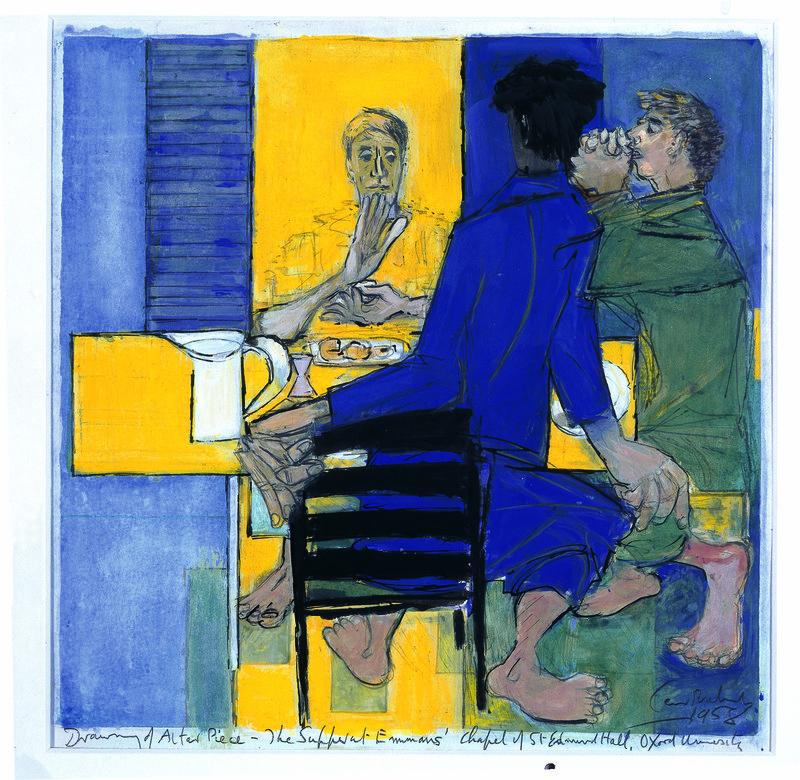
Ceri Richards (1903-1971)
Pen and ink, watercolour and gouache on paper
40 x 40 cm
1958
Methodist Modern Art Collection
No. RIC/1962
Image Copyright © Trustees for Methodist Church Purposes. The Methodist Church Registered Charity no. 1132208
Biblical commentary
Luke 24: 13–32
This is a study for the 1958 altar piece in the chapel at St Edmund Hall Oxford, although there are some differences between the study and the finished piece. Jesus sits facing the viewer, looking out of the picture, with one disciple sitting opposite him, his back to the viewer, and one on the right. The table is represented schematically as part of the yellow cross which is central to the picture. The chair directly in front of us has four bars across the back which seem to echo the shutters at the top left of the painting. A jug, a goblet and two plates (one with three bread rolls on it) are on the table. The palette is limited to blues, yellows and greens.
Commentary based on A Guide to the Methodist Art Collection.